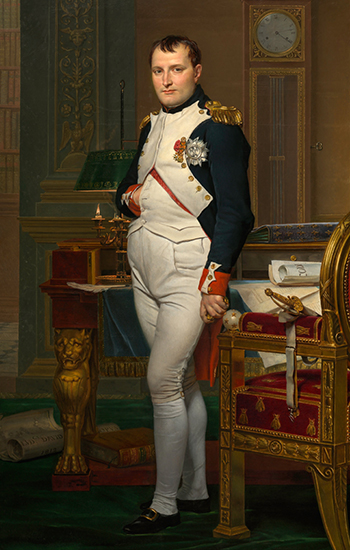Tube paints provide the freedom to paint out-of-doors, formerly, painters mixed pigment in their studios. This no fuss no muss ability is revolutionary to the world of painting; it is the catalyst announcing Modern Art, and the passing of the Renaissance era. A distinctive style and a new technique of painting is born. Beginning with Monet, successive paintings, in this collection, illustrate change and the differences between Modern and Renaissance painters. The London based, Winsor & Newton Company invented and manufacture tube paints. This image is of their first tube paints, 1840 - 1911.
Claude Monet (1840 – 1926) is born in Paris, France. The family moves to the Port of Le Havre during Claude’s early childhood. The unexpected death of his mother means the best place for the aspiring young artist is the Swiss Academy, and for that reason he returns to his birthplace.
Stress mounts as Monet reaches twenty-eight; fortunately, his suicide attempt fails. A few years later, good fortune reigns and he marries his love and muse, Camille. Gustave Courbet, the Realist painter in the Renaissance collection is a witness at the couple’s wedding.
Years after Camille passes, Claude remarries and follows his passion to paint the water lilies floating in his gardens at Giverny. Always the romantic, Monet has this to say: “Everyone discusses my art and pretends to understand, as if it were necessary to understand when it is simply necessary to love.”
Eventually Monet’s ability to capture the interplay between light and his subject on canvas earns the artist accolades. Declining eyesight tragically changes the way he sees the world, and the way others see his art.
View this amusing, candid photo of Claude and Alice surrounded by pigeons in St. Mark’s Square, in Venice, Italy. Claude provides this caption: "There were pigeons all over us and I was wincing a bit with fright. But, the picture was taken the moment they flew away." October 6, 1908.

Modern, French, Impressionist movement (c.1874 – 1885) Napoleon Bonaparte III, oversees a lengthy, improvement project of Paris. Les Invalides is just one of numerous accomplishments the first Emperor of France undertook after the war. What propels Napoleon to great power occurs during The French Revolution – a war lasting ten years.
As the restoration reaches completion, another war begins. This one is the Siege of Paris, between Germany and France from 1870-71. Construction changes hands when the German Empire takes charge.
Finally, Paris is refreshed, rail travel expands leisure time options, and the idealism of the Realist painters exhausts itself.
The Paris population explosion, after the Franco-Prussian War, gives artists a tremendous amount of subject matter for their scenes of urban life. Quite unexpectedly, welcomed evidence emerges suggesting change, at the tail end of the movement. You see it in Seurat’s painting of A Sunday on La Grande Jatte, in the Modern collection. There, Seurat depicts social classes mingling.
Go on to Describe, Analyze, Interpret & Conclude. Contact me for help.

Impression, Sunrise 1872. Oil on canvas.19 x 25 in. (48 x 63 cm.) The sea change that becomes the Impressionist movement begins with the hyphenated-brushstrokes Monet lays down on a misty morning, but no one is aware, including the artist and his peers. Zoom to explore how Monet plays with light and his casual style.
The independent group show, in 1874, receives an unflattering newspaper review from critic, Louis Leroy. He describes it as “The Exhibition of the Impressionists,” inferring their paintings are not finished.
Mr. Leroy becomes famous for failing to understand the painting because his criticism strengthens Monet’s determination to create what becomes one of the iconic movements in Western Art History – Impressionism.
Monet paints several other locations in the Port of Le Havre, at different times of the day. Fast-forward almost 150 years to see the Port of Le Havre. Today, the second largest seaport in France, with a population numbering around 175, 000 is 130 miles from its capital city, of Paris.
Impression, Sunrise is stolen in 1985. The precious work of art is recovered by French police in Porto Vecchio, Corsica. The painting suffers no damage, just loneliness from being cooped up in a cubbyhole for five years. Experts remove the yellowed varnish and the colors are restored, perhaps not completely.